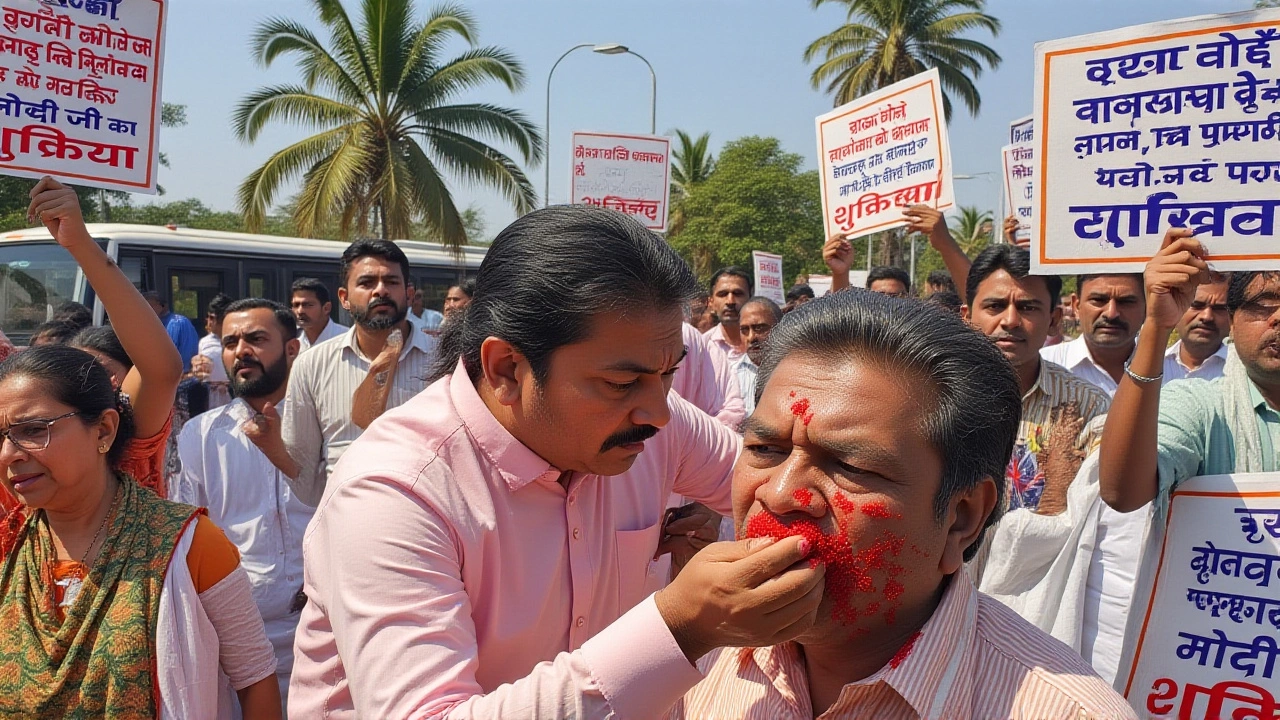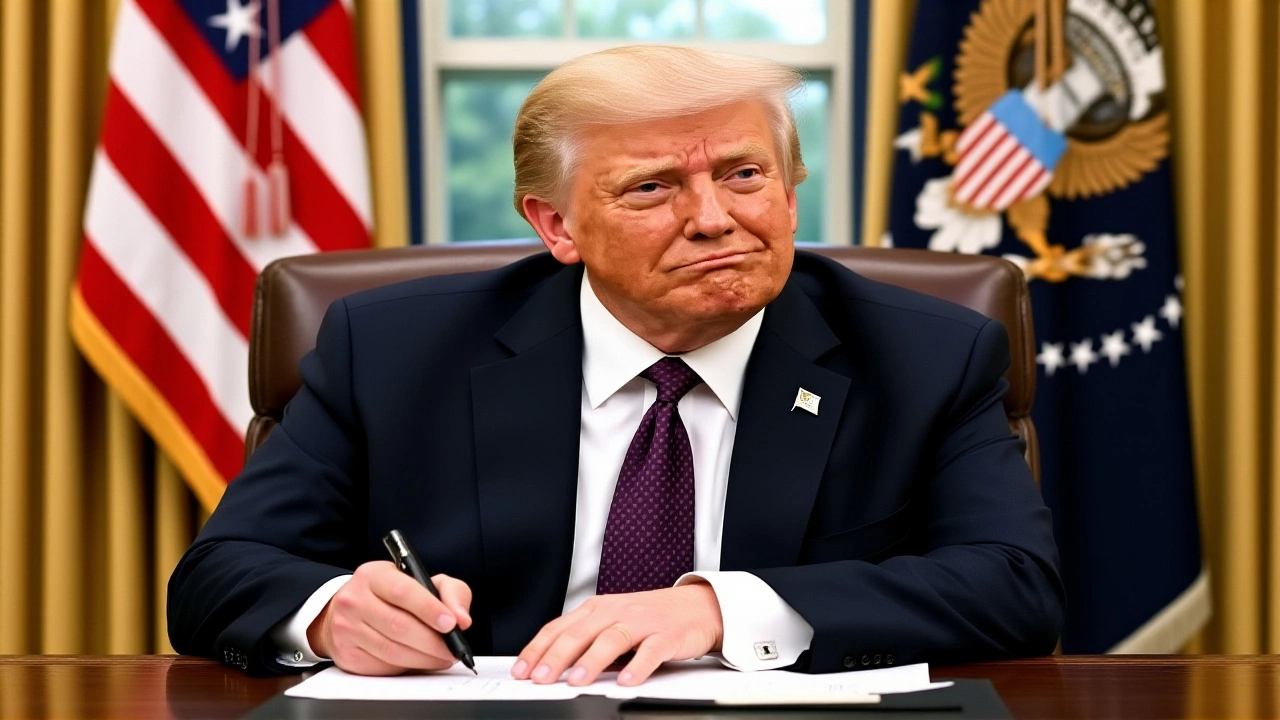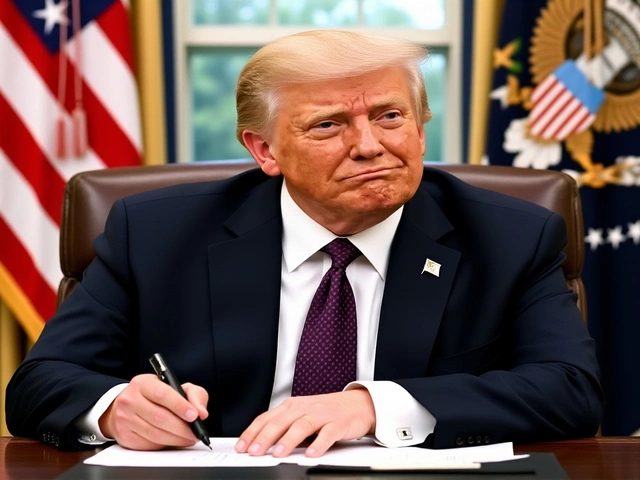When Donald Trump posted on Truth Social at 9:00 a.m. Eastern Time on Thursday, October 2025, he didn’t just make a policy announcement—he cracked open a door the world thought had been welded shut for over three decades. "Because of other countries testing programs, I have instructed the Pentagon to start testing our Nuclear Weapons on an equal basis," he wrote. The message came just hours before his high-stakes meeting with President Xi Jinping at the Asia-Pacific Economic Cooperation summit Gyeongju in South Korea. The timing wasn’t accidental. It was a signal. A warning. And for nuclear experts, it felt like the first rumble before an avalanche.
Breaking the Unspoken Truce
Since 1992, the United States hasn’t detonated a nuclear weapon. Russia last tested in 1990. China in 1996. France and the UK followed suit by 1996. Only North Korea has broken the silence since, with six tests between 2006 and 2017. This wasn’t just policy—it was a global norm, a quiet pact among nuclear powers to avoid the terrifying spectacle of mushroom clouds. The Comprehensive Nuclear-Test-Ban Treaty (CTBT), adopted by the UN in 1996, codified that norm—even though the U.S., China, and Russia never ratified it. They didn’t need to. The moratorium held. Until now.Trump’s order doesn’t just challenge the norm—it mocks it. He claimed the U.S. must "match" other nations, even though no other nation has tested in over 30 years. He singled out Russia as "second" and China as "a distant third," though he offered no data to back it up. That’s the problem. This isn’t about parity. It’s about perception. And in geopolitics, perception often becomes reality.
Russia’s Burevestnik and the Domino Effect
The trigger? Likely Russia’s 9M730 Burevestnik missile. On October 21, 2025, Gen. Valery Vasilyevich Gerasimov, chief of Russia’s General Staff, announced a successful test. The missile, nicknamed "Skyfall" by NATO, is nuclear-powered—capable of unlimited range and erratic flight paths that could bypass U.S. defenses. It’s also dangerous. A 2019 explosion at the Nenoksa test range killed five engineers and leaked radiation. The program’s been a mess. But politically? It’s a masterpiece.Trump’s announcement wasn’t random. It was a direct response. As the Yale School of Management noted in its November 18, 2025 analysis: "I don’t think the U.S. statement on nuclear testing is an out-of-the-blue threat; it’s a deterrent statement. If Moscow tests, so could the U.S." That’s the logic now: tit-for-tat, but with weapons that can end civilizations.

What Happens Next? The Ripple
The immediate risk? A cascade. China, which has never tested a thermonuclear warhead beyond its 1996 design, might feel compelled to validate new models. India and Pakistan, both with untested, advanced warhead designs, could follow. North Korea? It’s already waiting in the wings. One test by the U.S. could legitimize testing for everyone else."The public thinks nuclear weapons are relics," said the Yale analyst. "But they’re not. They’re the most powerful tools of coercion ever invented." And now, they’re being pulled out of the attic.
The U.S. currently relies on the Stockpile Stewardship Program—supercomputers, lasers, and subcritical tests—to maintain its arsenal without explosions. That program has worked. But it’s expensive. And fragile. If the U.S. resumes testing, it’s not just signaling strength—it’s admitting the simulations aren’t enough. That’s a terrifying admission.
The Long Shadow: Thermonuclear Reawakening
The real danger isn’t the next test. It’s what comes after. The Yale School of Management warns that the Cold War was defined not by atomic bombs, but by hydrogen bombs—weapons 1,000 times more powerful than Hiroshima. Those weapons were never fully understood by the public. And now, they’re being resurrected as political tools.Trump’s move may be aimed at deterring Russian aggression in Ukraine, which began in February 2022. But deterrence only works if both sides believe the other won’t pull the trigger. If the U.S. tests, and China responds, and India follows, we’re not just back to the Cold War. We’re in a new, more chaotic era—where nuclear brinkmanship isn’t a nightmare from the 1980s. It’s the new normal.
The forthcoming 2026 book, The Nuclear Age and Its Dangerous Successors, by a Yale professor, will explore this shift. But we won’t need to wait for the book to see its thesis play out. The first chapter is already being written—in the silence between seconds, before the next detonation.

What’s the U.S. Actually Capable Of?
The Pentagon has the infrastructure. The Nevada Test Site still stands. The B-61 bombs are modernized. The W87 warhead is ready. But the political will? That’s untested. Defense Secretary Lloyd Austin reportedly expressed "deep concern" behind closed doors. Military leaders know testing isn’t just a technical act—it’s a political declaration. And once you make it, you can’t unmake it.Even if the U.S. only tests once, the damage is done. The CTBT’s credibility is shattered. The IAEA’s monitoring network will be flooded with new seismic signals. Satellite imagery will show activity at Lop Nur, Pokhran, and Punggye-ri. And the world will be left wondering: Who’s next?
Frequently Asked Questions
Why is the U.S. considering nuclear testing now, when no other country has tested in decades?
The U.S. isn’t responding to a wave of tests—it’s reacting to Russia’s Burevestnik missile test and the perception that nuclear capabilities are being modernized elsewhere. Trump’s move is a deterrent strategy, not a technical necessity. The U.S. maintains its arsenal via computer simulations, but the political signal is meant to counter Russian aggression in Ukraine and deter China’s nuclear expansion.
What’s the difference between a nuclear test and the Stockpile Stewardship Program?
Stockpile Stewardship uses supercomputers and subcritical tests—explosions without nuclear chain reactions—to ensure warheads work. It’s been reliable since 1992. A nuclear test, by contrast, involves a full detonation with a self-sustaining chain reaction, releasing radiation and blast energy. The latter validates new designs; the former only maintains existing ones.
Which countries could follow the U.S. if it resumes testing?
China, India, Pakistan, and North Korea are the most likely. China has untested thermonuclear designs. India and Pakistan have advanced warheads never fully validated by testing. North Korea has already tested six times and would see U.S. testing as validation of its own program. Any one of them could trigger a regional arms race.
Why hasn’t the U.S. ratified the Comprehensive Nuclear-Test-Ban Treaty?
The U.S. Senate rejected ratification in 1999, citing concerns that verification couldn’t detect low-yield tests and that the U.S. might need to test if its stockpile degraded. Despite global support, the U.S., China, Russia, India, Pakistan, Israel, Iran, and North Korea remain among the eight Annex 2 states whose ratification is required for the treaty to enter into force.
How would the world know if the U.S. conducted a nuclear test?
The International Monitoring System (IMS), run by the CTBTO, uses seismic, infrasound, hydroacoustic, and radionuclide sensors worldwide. Even a small underground test would be detected within minutes. Satellites would spot thermal signatures or ground disturbances. The U.S. couldn’t hide it—and the global outcry would be immediate.
What’s the long-term risk of restarting nuclear testing?
The long-term risk is normalization. If nuclear testing becomes acceptable again, we risk a new arms race focused on thermonuclear weapons—far more destructive than those used in WWII. Public complacency could vanish overnight. Countries might develop new, smaller, "usable" nukes. The line between deterrence and war could blur. As Yale warns, we’re not just returning to the Cold War—we’re entering a more dangerous, unpredictable nuclear age.






